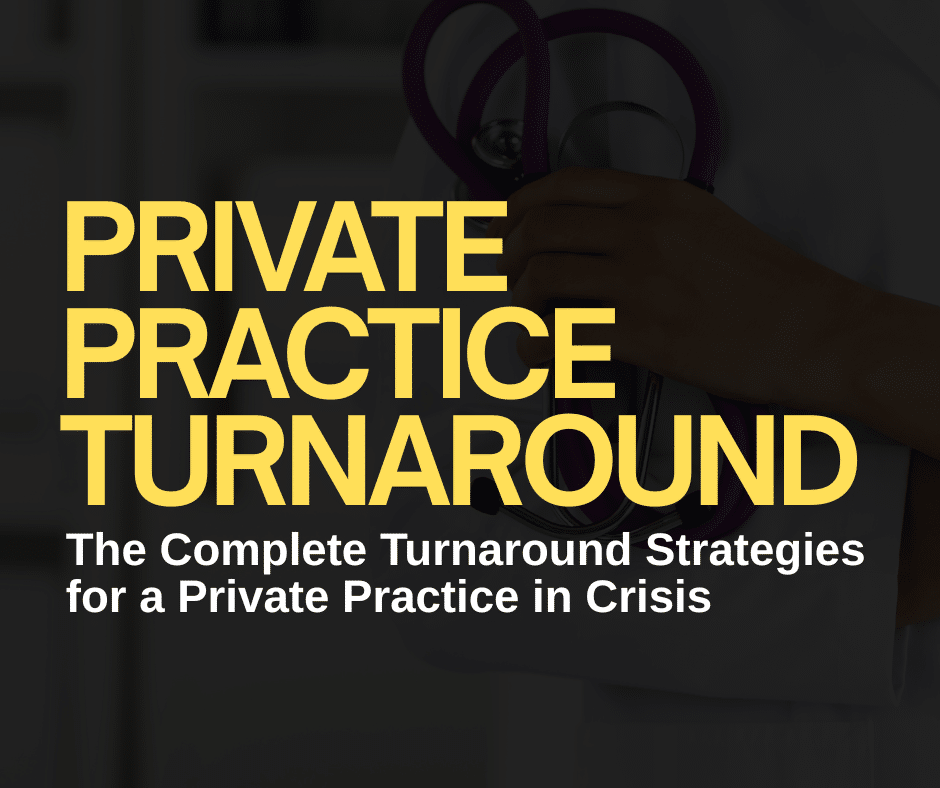The stats on burnout across the country are concerning. In 2019, the World Health Organization classified burnout as a “syndrome caused by chronic workplace stress.” If that was true in 2019, before the pandemic, it’s certainly more true now.
As society changes from an industrial society to a service economy, psychological pressure is increasingly translating into burnout. The Mayo Clinic reports that over 60% of physicians reported feelings of burnout. In addition, researchers found that emotional exhaustion and depersonalization scores were higher in 2021 than in any previous year.
The U.S. Surgeon General Vivek Murthy described healthcare worker burnout as a “crisis,” one that is a “call to our national….to address this crisis.”
He writes:
“One of my greatest sources of inspiration and hope during the pandemic has been the courage and dedication of health workers, which is why it is so troubling that, these days, when I visit a hospital, clinic or health department and ask staff how they’re doing, they use words like exhausted, traumatized, helpless and heartbroken.”
It’s easy enough to focus on the problem, and I could write endlessly on the dire place many of us find ourselves in, but what and where are the solutions? Vice-Admiral Murthy released The U.S. Surgeon General’s Advisory on Building a Thriving Health Workforce, a 76-page document that says, “We must take action,” and goes on to outline the ways to do so.
The report identifies seven sectors and focuses on what they can do:
- Healthcare organizations
- Federal, state, local and tribal governments
- Health insurers and payers
- Healthcare technology companies
- Academic institutions, clinical training programs, and accreditation bodies
- Family members, friends, and communities
- Health workers
Before he digs into what each sector can and must do to “reimagine and create a health care system where patients, communities, and health workers can all thrive,” he outlines six non-negotiable first steps:
- Protect the health, safety, and well-being of all health workers.
- Eliminate punitive policies for seeking mental health and substance use care.
- Reduce administrative and other workplace burdens to help health workers make time for what matters
- Transform organizational cultures to prioritize health worker well-being and show all health workers that they are valued.
- Recognize social connection and community as core values of the health care system.
- Invest in public health and our public health workforce.
This advisory report was written with such deep compassion for the plight of every healthcare worker that I want to distill his words into this guide to physician emotional burnout.
What Healthcare Organizations Can Do
Whether the organization is private or public, everyone can learn the harsh lessons the pandemic has taught us about the cultures and environments that have done little to support doctors and other health workers. Healthcare organizations can, first and foremost, listen and pay attention to what we need.
These organizations must engage with their workers and involve them in the conversation on improving “processes, workflows, and organizational culture.” The Institute for Healthcare Improvement (IHI) provided A Guide to Promoting Healthcare Workforce Well-Being During and After the COVID-19 Pandemic, filled with ideas and actionable tools for combating healthcare workforce “burnout, fatigue, and emotional distress.”

Here’s what healthcare organizations can do to help physicians combat emotional burnout:
- Show health workers how much they are valued.
- Build a commitment to the health and safety of health workers into the fabric of health organizations.
- Review and revise policies to ensure health workers are not deterred from seeking appropriate care for their physical, mental, and/or substance use challenges.
- Increase access to high-quality, confidential mental health and substance use care for all health workers.
- Develop mental health support services tailored to the needs of health workers.
- Rebuild community and social connections among health workers to mitigate burnout and feelings of loneliness and isolation.
- Help health workers prioritize quality time with patients and colleagues.
- Combat bias, racism, and discrimination in the workplace.
- Work with health workers and communities to confront health misinformation.
- Invest in health prevention and social services to address health inequities.
What Federal, State, Local and Tribal Governments Can Do
In January of this year, the U.S. Department of Health and Human Services (HHS) invested $103 million to support evidence-informed programs, practices, and training on preventing and addressing burnout and other mental health issues for healthcare workers.
They are also committed to, among other actions, enacting paid leave and rest time policies to let health workers take care of their physical and mental health regularly, not just in times of public health emergencies. Along with this enactment, HHS is expanding support for Public Health, Equity, Resilience, and Opportunity (PH-HERO), which specifically addresses “burnout, resiliency, and morale and to support a culture of well-being.”

Here’s what federal, state, local, and tribal governments can additionally do to help physicians combat emotional burnout:
- Develop and invest in reimbursement models that are aligned with the goals of high-quality person-centered care, including prevention services and coordinated care teams.
- Address punitive policies that deter health workers from seeking mental health and substance use care.
- Increase access to quality, confidential mental health and substance use care for all health workers.
- Reduce administrative burdens contributing to health worker burnout.
- Recruit, expand, and retain diverse healthcare and public health workforce to meet current and future health challenges.
- Address societal contributions to health to improve patient outcomes and decrease demand on health workers and health systems.
- Commit to a coordinated, whole-of-government approach to adequately prepare public health, health care systems, and health workers for future public health emergencies.
Some of the specific actions Murthy wants to see the government do on all levels is to “partner with health care delivery organizations… to reduce documentation burden by 75% by 2025.
Another initiative is to expand Graduate Medical Education (GME) positions to look ahead on how to meet the nation’s future healthcare needs. By 2034, there will be an estimated shortage of up to 48,000 primary care physicians and nearly 77,100 physicians in non-primary care specialties.
What Health insurers and Payers Can Do
One of the contributing factors to physicians’ emotional burnout is a system where we feel penalized for spending the time we need to spend to give our patients adequate care. We’ve all experienced the pressure when our 15-minute allotted time slot is over, but there needs to be more conversation and help given.

Health insurance companies can contribute to reducing physicians’ emotional burnout by:
- Improving the quality of health care by supporting the quality and quantity of time that health workers can spend with patients.
- Reducing the administrative burden of prior authorization requests and other documentation and reporting requirements.
- Ensuring health workers have access to quality mental health and substance use care.
- Partnering with healthcare delivery organizations to improve clinical care and preventive services.
- Increasing transparency for healthcare providers to make better health decisions.
In 2018, the U.S. Office of the Inspector General found “high rates of inappropriate prior authorization requests.” A 2020 survey reported that 85% of physicians found the burden of prior authorization requests high or extremely high, and 34% identified that single activity led to a “serious adverse event” for a patient in their care.
According to the 2020 CAQH Index, implementing an electronic prior authorization could save $417 million each year, and transitioning to a fully electronic prior authorization process could save health workers up to 12 minutes on each transaction.
What Healthcare Technology Companies Can Do
While technology is intended to make our lives easier, it doesn’t always feel that way when we work with it to deliver, process, and access information. Some specific ways healthcare technology companies can help address emotional burnout are:
- Design technology to serve the needs of health workers, care teams, and patients across the continuum of care.
- Design platforms with the goal of interoperability at the outset.
- Strengthen the integration of data across different platforms and health sectors.
- Improve seamless storage of and access to health data.
According to a time and motion study in four specialties, physicians spend two hours on the electronic health record (EHR) and other administrative tasks for every hour directly caring for patients. Nurses spend up to 41% of their time on the EHR and documentation.

Proposed solutions would be to:
- Reduce EHR pop-up messages to minimize work interruptions
- Improve EHR integration into daily workflows
- Require minimal mouse clicks to carry out a task
- Curate health data to better visualize patient health data
- Include resources to better support clinical decision support
Allowing data to be accessed on computers, mobile phones, and other devices would save the entire medical team time and effort.
What Academic Institutions, Clinical Training Programs, and Accreditation Bodies Can Do
Physician burnout isn’t just for the doctor who has been practicing medicine long-term and experienced a tipping point with COVID-19. Several studies found that “high levels of anxiety, fear, sleep disturbances, and depression were reported among college students — 70% of medical trainees said their mental health was “worse than baseline.”
We can’t afford this. With the projected shortage of new doctors entering the medical field, we need those pursuing a medical career to be equipped to deal with the daily stresses of being a physician.

To that end, the advisory lists these ways students can be better supported by their training:
- Prioritize, assess, and support learner well-being.
- Acknowledge the hidden curriculum within health professional education and address its impact on trainee development and well-being.
- Promote and increase access to mental health and substance use care for health professional learners and faculty.
- Respond to the unique needs of students and promote inclusion and diversity to support the well-being of all.
- Foster peer connectedness.
- Strengthen the connection between trainees and the communities they serve to mitigate burnout and build trust and connection.
- Accreditation organizations can revise clinician accreditation standards to recognize and communicate the importance of health worker well-being.
What Family Members, Friends, and Communities Can Do
Healthcare organizations, governments, insurance and technology companies, and medical schooling can and must take seriously the impact emotional burnout has on physicians and the entire body of healthcare workers. But our everyday, hands-on support comes from our family members and close friends. Even our communities can help support us in practical ways.
- Learn to recognize when a health worker you know needs support.
- Protect your health and the health of your family.
- Adhere to local public health guidelines.
- Help friends and family do their part to support health workers.
- As a patient, be kind to health workers.
Sometimes those suffering from burnout don’t recognize the signs and drift away into unconnectedness. Family members and friends can help them stay connected and provide a barometer for how they’re doing.

Signs that someone is struggling and may need professional support include:
- Increased irritability
- Withdrawal from friends and family
- Impaired judgment
- Excessive alcohol or substance use
- Reduced ability to manage emotions and impulse
- Decreased personal hygiene
Some excellent resources provided are:
I’m Looking for Mental Health Help for Someone Else from Mental Health America
Seize the Awkward from Ad Council
Supporting a Family Member Who is a Health Care Worker from Zero Suicide in Health and Behavioral Healthcare
What We Can Do
Of course, when all is said and done, we are responsible for ourselves and our personal health. Follow these recommendations in order to move away from burnout to health:
- Learn to recognize the signs of distress, mental health challenges, and burnout in yourself and in your colleagues.
- Stay connected and reach out for help.
- Prioritize moments of joy and connection.
- Get back to basics with good health habits.
- Use your voice to advocate for positive changes in your workplace, learning environment, or communities.
If you’re not sure how much emotional burnout you are experiencing, these tests can help you determine how much help and support you may need:

The Standford Professional Fulfillment Index (PFI) is a 16-item survey that measures burnout and professional fulfillment in physicians. It’s free to take and measures three dimensions: work exhaustion, interpersonal disengagement, and professional fulfillment.
The Professional Quality of Life Measure (ProQOL) is a free tool that’s intended for any helper, including health care professionals. It’s the most commonly used measure on “the negative and positive affects of helping others who experience suffering and trauma.” The self-score test measures compassion satisfaction, burnout, and compassion fatigue. Click here to take the test.
A general Life Stress test is often used by medical professionals to determine the kind of life pressure you’re facing. It predicts the likelihood that you may develop some type of stress-related illness. Stress-related illnesses range from mild (frequent tension headaches, indigestion, loss of sleep) to very serious (ulcers, cancer, migraines). You can take the free test here.
Burnout Prevention Tools

Here are some burnout prevention tools you may want to consider trying:
- The Reactions to Stress exercise is a table that helps to capture stressful events and your reactions. By recording feelings, behaviors, and thoughts, repeating patterns can be recognized.
- The Stress as a Stimulus for Change worksheet lets you write down stressful situations you want to change.
- Identifying Your Stress Resources asks questions to help you recognize your resources and identify how they can support you.
- The Self-Care Check-In worksheet can be used to see where you need to give more attention to your self-care needs. It helps you see how much you’re currently doing and consider how you can help yourself more.
I’m not sure who said it, but the quote, “We cannot direct the wind, but we can adjust the sails,” seems like a good perspective to keep in mind as we work together to provide our health workforce with all that we need to heal and thrive.

